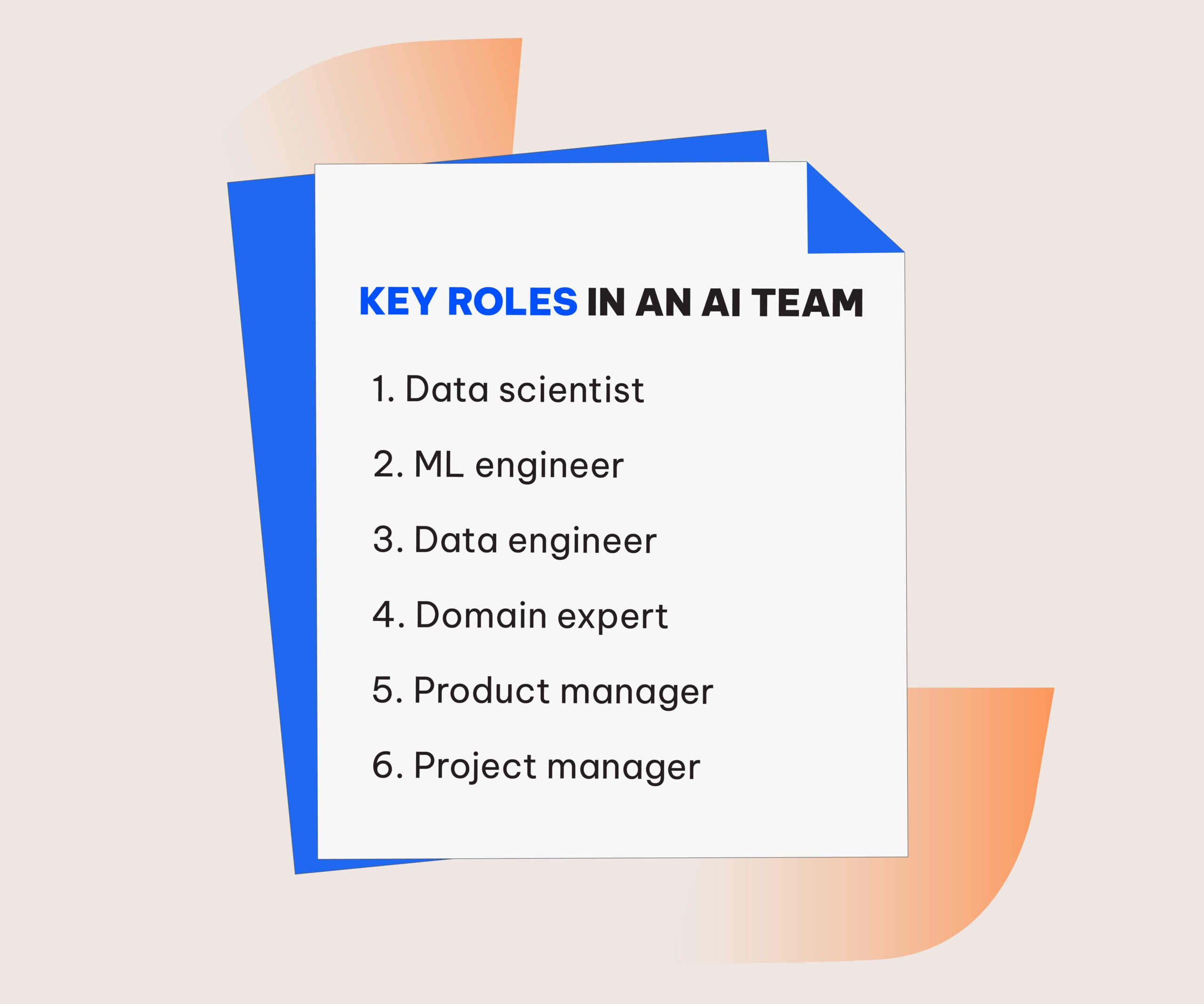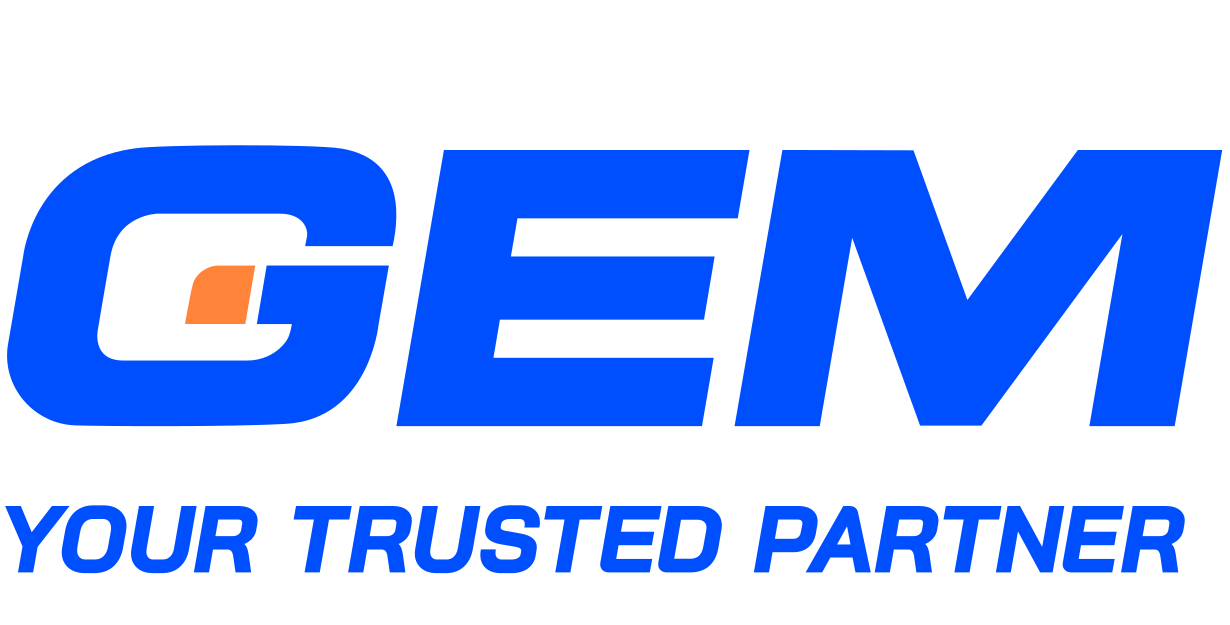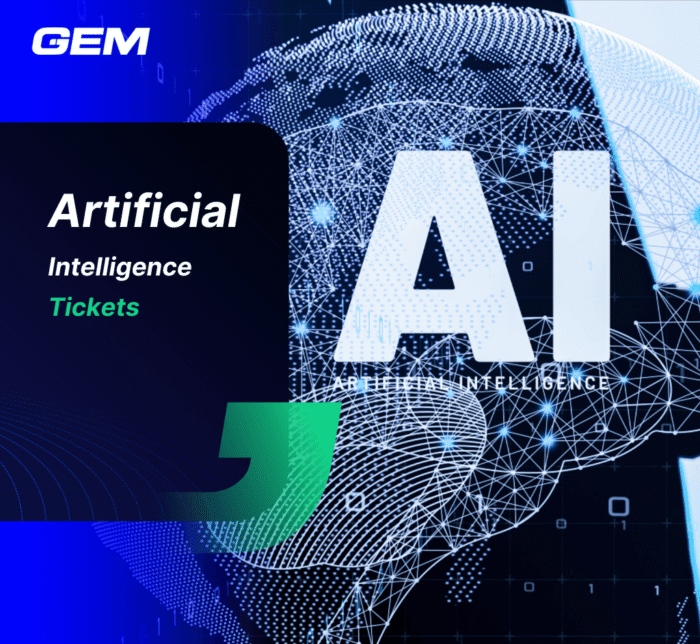Contents
Learn how to achieve success in AI implementation with a comprehensive list of key staff and more than 10 best practices followed by leading AI adopters.
With artificial intelligence (AI), businesses worldwide are reaping enormous benefits. The transformative technology accelerates business operations and frees human staff from mundane tasks, fostering an innovative business approach. In addition, it allows organizations to discover new ways to better their services and products and explore new markets.

As a result, enterprises of all sizes actively seek to integrate AI into their existing systems. According to a survey by Gartner, 79% of corporate strategists believe AI, analytics, and automation will be highly necessary for them to stay competitive and thrive in the next two years.
However, AI adopters will likely face challenges in finding key talents and choosing best practices for the project. In this article, GEM will tap into these two main barriers by outlining what composes a solid AI implementation team, before presenting several best practices to ensure businesses’ AI investment pays off.
Looking for a broader guide for your AI investment? GEM’s got you!
However, if your business wants to save time and swiftly adopt, IT outsourcing could be a viable option. To get started, you can get a glimpse of how to get started with IT outsourcing in GEM’s 2024 RFP Templates. These templates will help you:
- Understand the essential components of a standard IT outsourcing project
- Define metrics to filter out unqualified vendors and find the most suitable tech partners
Fruitful AI implementation requires a solid team
The following key roles are found in well-run AI teams of successful enterprise adopters:

Data scientist
This role is considered the core of an AI implementation team. Their main responsibility is to identify the challenges that need to be addressed and figure out how to solve them with data.
Mark Eltsefon, a data scientist working for TikTok, has gone further to explain the duties of his job position as:
- Understand important metrics that define a company’s performance
- Gathering data to detect any possible bottlenecks
- Proposing solutions to boost these metrics and possibly building a prototype for it
In short, Eltsefon said a data scientist is a combination of a business analyst and a product analyst, plus a base knowledge of machine learning (ML).
ML engineer
ML models are built by data scientists and implemented by ML engineers. They will pack the ML model into a container to be deployed. Therefore, this role of an AI implementation team requires expertise in server configuration and back-end programming. In addition, an ML engineer is involved in model validation, A/B testing, and production monitoring.

Data engineer
Data engineers are responsible for building and maintaining the data infrastructure of an organization. Their role is considered to be foundational, especially for companies that are building a team for the first time. Since any data science-related initiative requires the processing of a massive volume of data, about 80% of the effort will involve data engineering – as stated by Matt Mead, CTO at SPR – a company providing information technology services.
Domain expert
This person has a comprehensive understanding of a particular domain or subject area, They can evaluate data quality, communicate with other business stakeholders of an AI implementation project, and provide important insights to make sure it yields tangible results.

The importance of domain experts is undeniable, as the technical staff of a typical AI team rarely has expertise in the intended industry.
Product manager
In an AI implementation project, the product manager oversees both the development and marketing sides of the AI product. They figure out how AI can be leveraged to solve customer problems, create a product strategy, estimate and control budget, and manage cross-functional teams. Therefore, product managers should possess both tech expertise and business acumen.
Project manager
AI projects can be plagued with issues since the team structure can be quite complex with members of different functions. A competent project manager helps streamline the workflow of such multi-disciplinary teams and measure the AI solution’s business value.

In the future, when the AI field advances, there will be added tasks such as handling audits and responding to certification-related questions for an AI solution. This will lead to a wider scope of work for project managers.
Core and advanced practices to unlock successful AI implementation
What are the traits of those who achieve success in their AI projects?
McKinsey & Company has been tracking organizations’ AI implementation processes to figure out what sets high performers from less successful counterparts. Successful adopters – called “high performers” – are defined as organizations that report an earning increase of at least 20% attributed to AI investment.

Over the 2021-2023 period with three yearly surveys, McKinsey has pinpointed several characteristics:
- Following core and advanced AI practices
- Conducting higher level of reskilling (up to 30% of their workforce will undergo added training as a result of AI adoption)
- Using AI in more business functions and broadly in their organizations
So what are the core and advanced AI implementation practices that we can learn from leading AI adopters who have reported impressive ROI? Here is the list, as compiled by McKinsey
Core practices
- Applying design thinking in AI development
- Conducting internal model performance testing before deployment
- Tracking performance to ensure the progressive improvement of the AI models and their outcomes
- Having clearly defined data governance processes
- Employing proper protocols relating to data quality and AI tool building and delivering
- Tailoring programs to develop AI skills for staff

Advanced practices
- Employing a full life-cycle approach to AI model development and deployment
- Regularly refining AI models
- Adopting suitable processes and techniques to ensure model explainability
- Designing scalable and reusable AI models
- Leveraging third-party services for the processes of testing, verifying, validating, and monitoring the AI models’ performance
- Choosing a standardized end-to-end platform
Closing remark
Thanks to its revolutionary changes, AI implementation has become more and more common among companies and organizations across domains. However, there is a considerable gap between successful adopters and those who struggle to derive value from AI investment. The difference lies in the quality of the AI workforce with a sufficient amount of expertise and following recommended practices.
Need help assembling a high-performing AI team?
GEM takes great pride in our hands-on experience in turning AI power into tailored solutions and systems that address your unique pain points and yield immense impacts such as doubling your efficiency and revealing new revenue streams.
Connect with our AI experts via the form below – We are ready 24/7!






